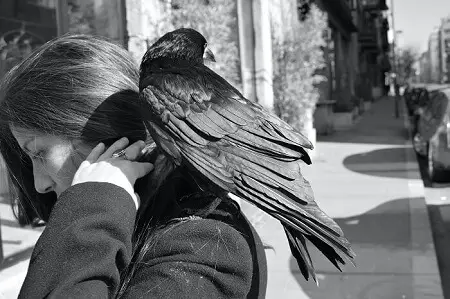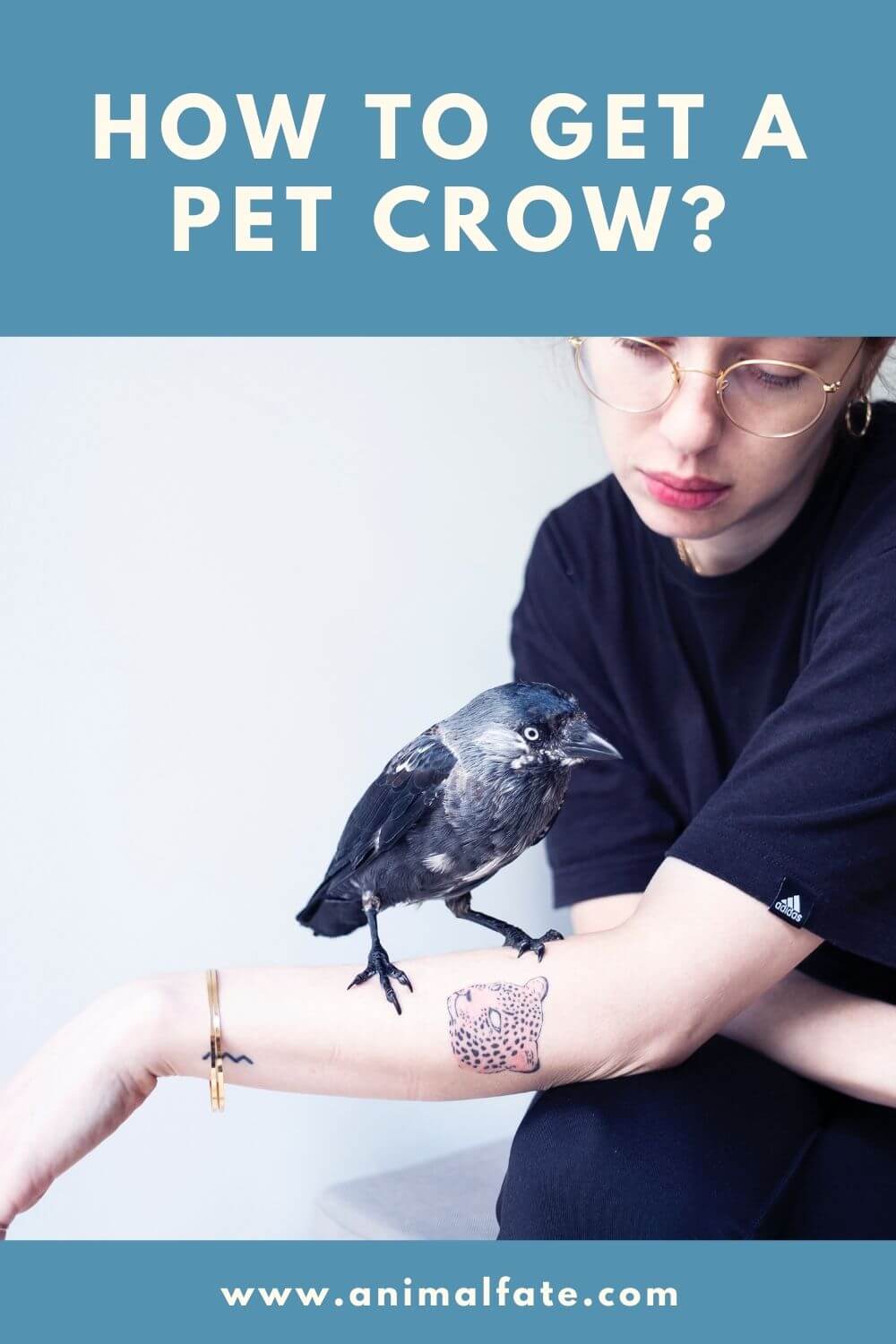Crows are intelligent birds, and it can be fascinating to interact with them. However, crows are wild animals, and unlike the usual pets, it can be challenging to deal with crows. Thus, if you wish to get a pet crow, you may want to consider four things: permit, cage, food, and behavior. So, how to get crow as your pet?
Let’s understand each one.
Contents
Permit
Crows are wild birds, and they are also migratory. Being such, these birds are under the protection of the law in most areas.
It is illegal for the US residents to keep crows as pets, and they can only get crows of the non-native species.
Thus, if you live in the US, it’s not a good idea to keep crows. You may even get arrested if you get caught holding one at home.
If you want to get a pet crow, go and present yourself to the local authorities and ask for permission. Having a permit will avoid problems in the future on legal matters.
The permit isn’t solely for the crow’s protection.
Sometimes, local ordinances prohibit pet crows as they can be a nuisance to people nearby.
Thus, you can only have permission to think that having a crow wouldn’t cause any problems in your area.
Cage
Aside from the permit, you should also consider the cage where you’ll put your pet crow.
As wild birds, they’ll need to stretch their wings and be able to around. Thus, a cage needs to be a big one.
A crow wouldn’t survive in a parrot cage or any small cell of their size. As wild animals, they need to flap their wings and move around.
Consider getting a cage big enough for them to do so, or even an aviary if you can. The bigger space is, the better for crows.
Food
Food isn’t a problem for crows since they eat almost anything.
Crows are omnivores, and they can eat both meat and plants. Still, you will need to prepare something nutritious for them.
Meat, nuts, and seeds are ideal for feeding them. They can also chew on fruits and vegetables.
There are also a few items that can be hazardous to them. Avoid giving them salted or seasoned food, and even the processed ones.
As a general rule of thumb, give them something organic, and avoid food with chemicals.
Related – How to catch a crow for a pet?
Behavior
Crows, unlike any other birds, have unique behavior.
The very first thing is that they can be quite loud. Despite a crow’s small size, the sound of its caws can be deafening to the ears.
You may think you can bear with it, but the nearer they are, the louder they sound.
You might have heard loud caws from crows from afar. If that’s loud enough, you can only imagine hearing them besides you.
The second thing is that they tend to call other crows. Crows are social birds, and their caws tend to attract other crows.
If you’re only planning to get a couple or only one crow, you may end up getting a murder of crows after some time.
A single crow is loud enough. How much more if there’s a group of them.
With all these things, you should always remember that crows can be challenging to manage as pets. Crows are wild animals. Thus, their nature is to be out in the wild, and not in a cage.
You May Also Read – Do crows like shiny things?
Can crows be tamed?
Yes, you can tame a crow. It’s a process requiring a lot of time and effort, but in itself, it can be quite a fulfilling experience.
Crows may be wild animals, but they can learn to interact with humans even without putting them in a cage.
These intelligent birds are good at remembering faces. That’s why if you wish, you can make friends with them.
Thus, my friendly suggestion for you is just to befriend crows. You don’t need to limit them in a cage.

How do I get a crow friend?
Trust me. Crows can be much more fascinating if you interact with them in their wild state.
With this in mind, here are some steps to befriend crows instead of taking them as pets.
Figure out what crows like and dislike
Like other birds, there is food that crows may like or dislike. Observe their behavior towards the food you serve. Eventually, you’ll figure out what is ideal for feeding them.
Build a quiet and safe environment for crows
Creating a quiet environment will make it easier for crows to approach you. Even if they are not in the cage as pets, they will come back if they feel safe in your area.
Treat them from time to time with their favorites
As opportunists, crows will try various options before settling to the one they like the most. Crows may not be hard to feed, but once they tasted a particular food they prefer, they can be demanding.
Schedule routine feeding
By establishing a feeding routine, crows will see you as someone reliable. They’ll sense you as someone predictable, and they will learn what to expect from you. Most important, giving them something routinary will establish trust and a good relationship. If you want to pet a baby crow, you can learn what they eat here.
Put a birdbath for crows
As much as every bird needs water, crows also do. By providing a birdbath, your yard will be more attractive for crows. It will be a place where they can bathe, drink, and even wash their food.
Provide a birdbath that is wide enough to accommodate many crows. Have a steadier one so they can grip with ease.
Exert a lot of patience
Crows can be quite challenging to befriend, especially during your first attempts.
Thus, you need a lot of patience to establish trust with them. If you let out food and crows didn’t take it, they may not like it, so you may want to change it.
Don’t worry, though. As soon as you establish trust, you’ll have crows in your yard, which you can consider pets.
You May Also Read – How to recognize crow poop? Learn here.
In Summary
Getting a pet crow is possible, but not ideal. Yes, they can be fascinating pets, but it’s not how they’re supposed to be.
If you wish to do so, you can get a pet crow by considering four things: permit, cage, food, and behavior.
Even so, the best thing is to let them remain as wild animals and just befriend them. Having crow friends is much enticing than having them caged.
What does it mean when crows gather around your house? Read here.
Resources
Image credits – Photo by Marija Zaric on Unsplash



